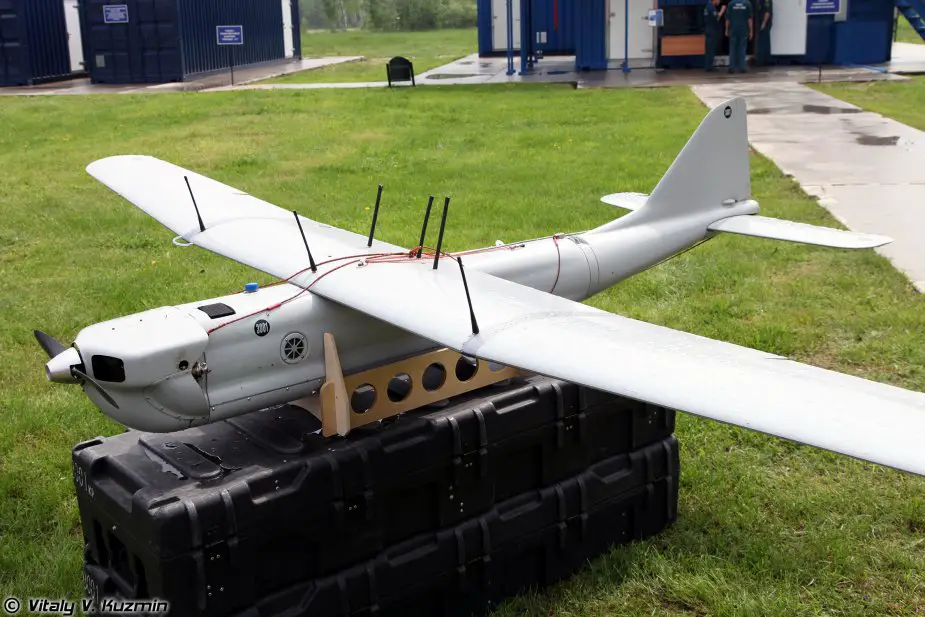Reconnaissance-strike forces are the most promising guideline in aviation. They engage artillery in fire and drones for reconnaissance, target detection at the frontline and in the tactical depth of adversary defense and control of their destruction in real-time. The latest Orlan-30 is most fit for the mission, the Zvezda weekly writes.
Follow Air Recognition on Google News at this link
 Orlan 30. (Picture source: Vitaly Kuzmin)
Orlan 30. (Picture source: Vitaly Kuzmin)
The Defense Ministry has recently announced that flight trials of Orlan-30 were completed and batch production began. The first drones are to be delivered in 2020. Orlan-30 has a takeoff weight of 31 kg, develops a speed of 180 km/h and rises to an altitude of five kilometres. The craft can loiter for five hours at a distance of 300 km from the launch site.
Official sources confirmed the engagement in Syria of Krasnopol guided artillery shells against terrorist bases which kept combat drones to attack Russian Humaymim airbase. The projectiles are fired by Msta-B howitzers.
The Russian ground forces have a broad range of guided artillery shells, Besides Krasnopol, there are guided Gran mines for 2B11 mortars and other weapons of the same caliber. There are 120mm self-propelled Nona-SVK and Hosta artillery guns for which Kitolov guided projectiles were designed. Smelchak-M is the biggest projectile for fire from 240mm self-propelled Tyulpan 2S4 mortars.
The Syrian army operates towed M-240 mortars which were engaged to free Damascus suburbs from terrorists. All the projectiles can hit targets by the first shot.
The first reports about the engagement of reconnaissance-strike forces with drones appeared in 2017 when the Syrian government forces fought terrorists in desert. Eleron-3, Orlan-10, Forpost and other drones searched for the targets. The Russian airpower delivered precision strikes at exposed targets.
In some cases, advanced air controllers used laser rangers to illuminate targets. However, the controllers risk their lives.
Orlan-30 was designed for reconnaissance in optical and infrared bands and guidance provision, as well as measuring shell deviation from the target and fire adjustment.
It differs from Orlan-10 predecessor by a laser ranger which allows the drone to illuminate the target by the beam of an optical quantum generator. It means precise guidance for a smart air bomb or a guided artillery projectile.
Reconnaissance-strike forces were tested in the Syrian campaign. Footage showed artillery fire at stationary objects, armor and automobiles of terrorists. The targets were hit by the first shot.
The Shipunov Design Bureau which developed Krasnopol proposed several years ago a concept of automatic fire on the basis of a drone with a laser ranger. The concept of joint engagement of an artillery battery and a compact drone means the latter illuminates the target by optical quantum generator.
The bureau designed the placement on Katran drone of four kilograms of onboard equipment, including a gyro-stabilized platform. The drone weighed close to 40 kg and was a prototype for trials. It was not serially produced.
© Copyright 2020 TASS. All rights reserved. This material may not be published, broadcast, rewritten or redistributed.
















